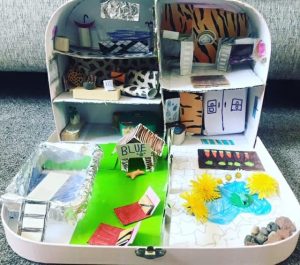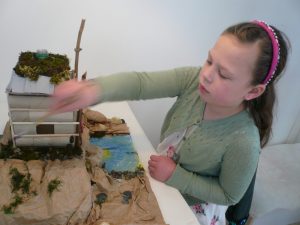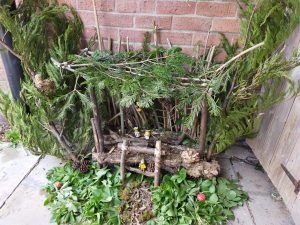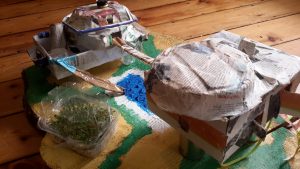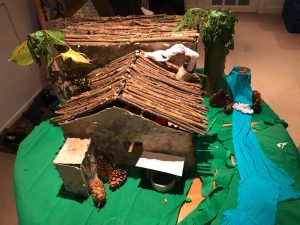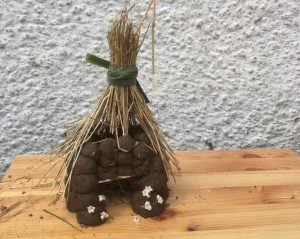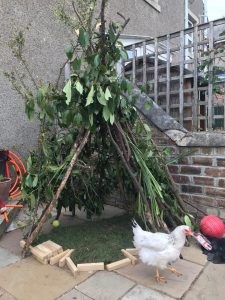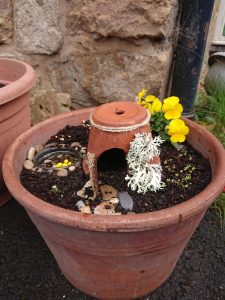Class 3 builds shelters from materials upcyled and from nature
May 4 2020
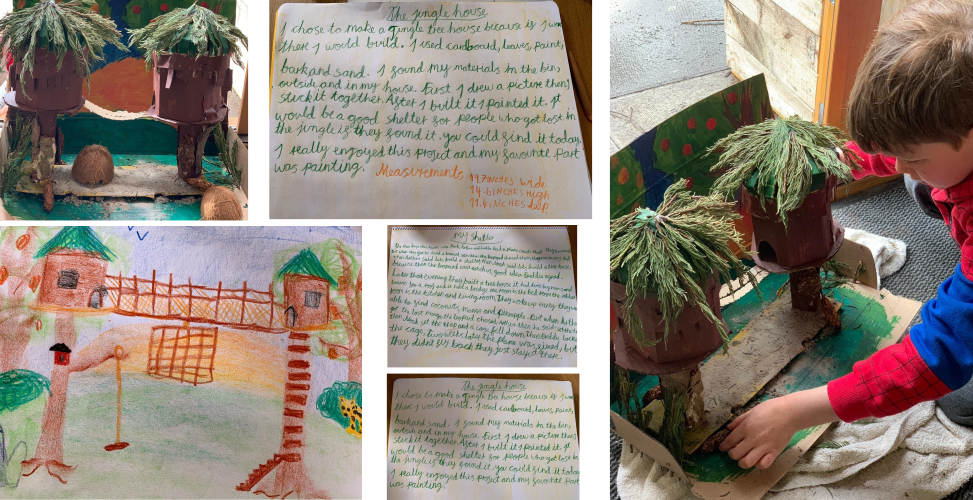
In Steiner education, Class 3 pupils learn about house construction through the ages, starting with early timber designs through to brick making and more recent construction methods.
Around Class 3 there is a dramatic shift developmentally in a child’s sense of self from the experience of feeling at the centre of the world to beginning to feel more separate from it. The teacher meets the children’s growing interest to look outwardly at their environment, and their place in it. Rich, experiential learning helps children cultivate a real-life, human connection with the environment.
Starting from the children’s experience the class looks at how our bodies try to cool us when it is hot and warm us when we are cold. Then we looked at what else we can do to cool ourselves down or warm ourselves up. This leads to an exploration of shelters from various climates – how did these shelters use the same ways of keeping the people who lived in them comfortable? What things should you consider in building in a hot dry climate, or a hot wet area? What can be done to protect from the wind in various shelters? How do people build shelters in extremely cold places?
At around age 9, they learn how raw materials are transformed and used in building. Pupils look at, and draw, shelters of various kinds – Tuul grass huts and Bedouin tents; Mongolian Gers and Inuit Igloos.
It’s usual to undertake a building project, starting on their own model shelter constructions, which are immensely educational: the children learn a lot about their shelters – but also, how to plan and execute a practical project in a shared space. In this way children see the evidence and outcomes of their efforts. As groups they gain ownership of projects and participate in communal initiatives to achieve practical goals. This year, however, projects were turned on their head.
Typically, pupils would pick a ‘shelter’ of their choice first. However, Class Teacher Karen Ford asked pupils to build only with what they had accessible at home that they could recycle or from nature.
The project includes the pupil writing about the process. Each child then included a diary entry to describe who would use the shelter, constructing a story of ‘a day in the life’ the inhabitant. The project was all encompassing to include their English and Maths lesson, so as to make the remote learning manageable for parents. The pupils incorporated their measuring Main Lesson by measuring and recording the size of their shelter. And Ms Ford also read chapters of The Borrowers, as audio files, which included the mice building a home in the middle of a field.
Whilst younger and older siblings are able to help this year, Ms Ford notes one of the most defining aspect about these projects is the lack of parental ‘help’ that normally is evident to varying degrees with this project.
The essence of the Steiner Main Lesson programme is to experience a rich multi-sensory approach that balances intellectual, artistic and practical content, and engages different learning styles.
- Gracie’s suitcase house, inspired by the Saville’s Little Architect challenge.
- Anoushka’s fisherman’s house from the Bronze age.
- Twins Fredddie & Arthur: Jungle house for explorers using materials from wood next to their home
- Evie’s eco-house complete with compostable toilet.
- Maia’s dream farm house for her future..
- Eala’s mud house, inspried by how swallows build their nest.
- Sandy’s chicken house for his actual chicken.
- Naomi’s multi-purpose structure, with aquarium, slides, a ladder.
- Juniper’s pot shelter.

